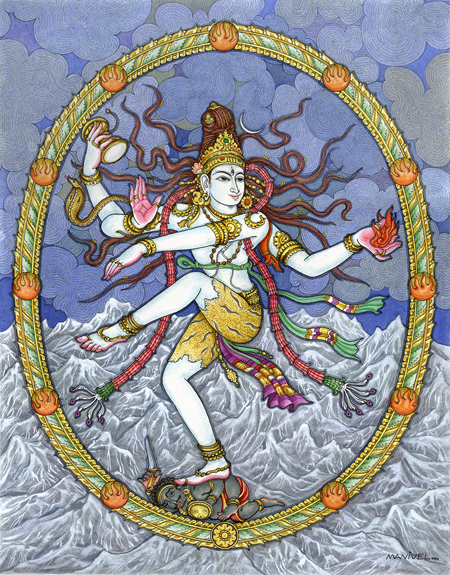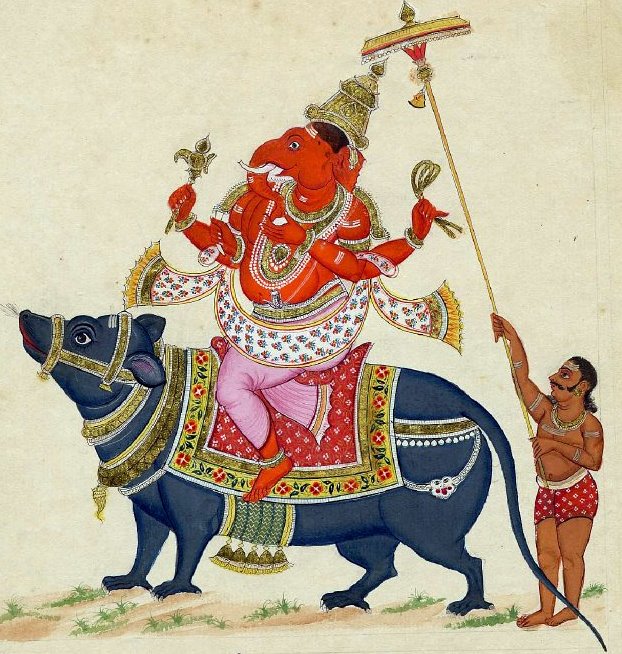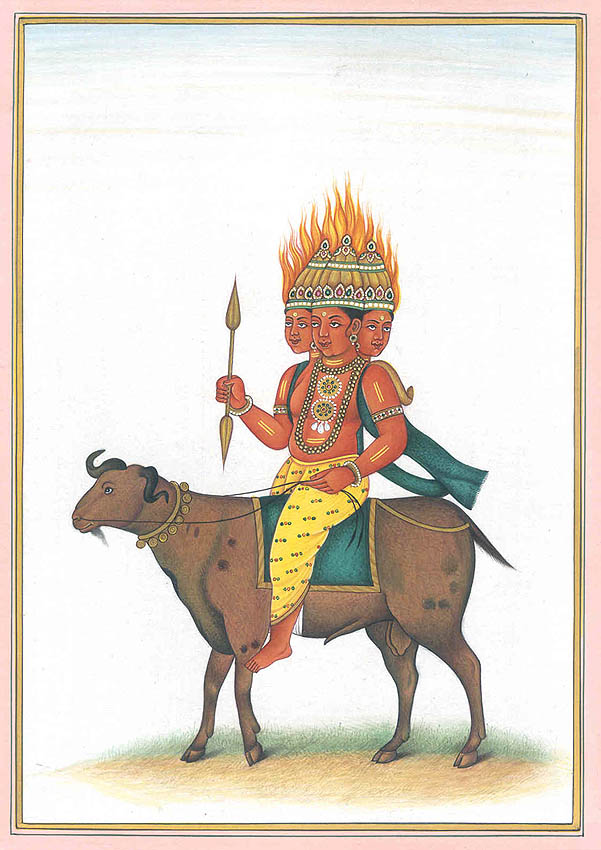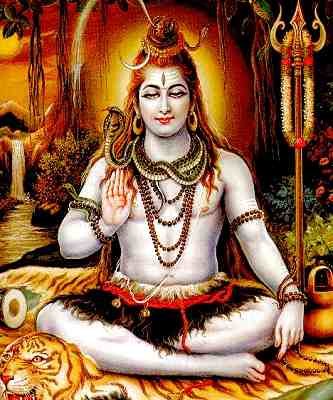
Nataraja
Shiva the Hindu god of destruction is also known as Nataraja, the Lord of the Dance. Like yoga, dance induces trance, ecstasy and the experience of the divine.
The most common figures depict a four-armed Nataraja. These multiple arms represent the four cardinal directions. Each hand either holds an object or makes a specific mudra (gesture).
The upper right hand holds a hour-glass drum which is a symbol of creation. It is beating the pulse of the universe. The drum also provides the music that accompanies Nataraja’s dance.
The opposite hand, the upper left, bears on its palm a tongue of flames. Fire is the element of destruction of the world. It is also the symbol of passion.
The second right hand is held in the abhaya pose (without fear) and so a gesture of protection. It depicts the god as a protector.
The left leg is raised towards the right leg and reaches across it; the lower left hand is stretched across the body and points to the upraised left foot which represents release from the cycle of birth and death.
The hand pointing to the uplifted foot is held in a pose imitative of the outstretched trunk of an elephant. In Sanskrit this is known as the ’gaja-hasta-mudra’ (the posture of the elephant trunk), and is symbolic of Ganesha, Shiva’s son, the Remover of Obstacles.
Nataraja dances on the body of a dwarf apasmara-purusha, the man of forgetfulness, who embodies indifference, ignorance and laziness.
Creation is possible only when the weight of inertia is overcome and suppressed. The Nataraja image thus addresses each individual to overcome complacency and get his or her own act together.
The ring of fire and light, which circumscribes the entire image, identifies the field of the dance with the entire universe. The lotus pedestal on which the image rests locates this universe in the heart or consciousness of each person.
The hands of Shiva represent the Human Faculties of the Imagination (Creation, Spirit, Vishnu), Control (Destruction, Thinking, Compression, Shiva), Desire (Agni, Fire, Sensing &Acting, Expansion) and the Emotions (Soul, Ganesha, Motivation, Removing Obstacles).

Vishnu
Imagination
Humans need the “Illusion of Control” to sustain their Identity. Deep within they don’t want to believe that Other Human Beings or the Forces of Nature (“the Acts of God“) are also Active Agents.
The Imagination creates the Identity, the believe that I Am What I Am.
When we are in Deep Meditation, the Observer, the Consciousness, is able to watch the constant popping up of Images (Ideas) out of the Nothing.
If we are not able to keep the Observer-state, we move into the Sleep of the Darkness or our Senses are attracted by one of the Images and move into the Dream State.
According to Buddist belief the Dream State, (Maya, Not-That) is Not the Real Word. This world is hidden behind a veil. Behind the veil lies the Void.
The Void is not empty. It is comparable to the Zero-Point-Field, the state of the Universe before the Big Bang. In this state everything, even the impossible, is possible.
In the Void, Ideas of the First Creator (Brahman) Pop-Up, Move into Existence for a while and finally disappear.
For a very long time Brahman was in deep meditation until one of the Ideas of Brahman created a Huge Excitement. This was the Idea to become Aware of Itself.
To make this happen Brahman had to spit itself into two parts, the Observer (Being, Consciousness) and the Actor (Becoming, Desire, Acting).
Maya, the Material World, the Expanding Universe, was created when the Desire to become Aware generated the first Split of the Universe, the split between the Void and the Not-Void, the Whole.
At this moment the Left Brain and the Right Brain of Brahman are fusing and soon we all will experience the Whole which is not the Void. The Void will stay a Mystery for Ever and Ever.

Ganesha
Motivation
Ganesha rides a mouse, the symbol of mankind’s ignorance, his hidden fears and insecurities and his deep attachment to petty worldly objects.
By riding on the mouse, Ganesha shows that one can and must control and overcome all negative feelings. One can be the master of oneself and need not be a slave.
The head of Ganesha, the Elephant, symbolizes the Atman, the Soul and his human body signifies Maya.
Our “Head” or better our Soul is connected to the Void, but our Body is an Expression of the Non-Void.
Our Body is part of the Material World and has to obey the Rules of the Material World.
Ganesha represents the Emotions, the Motivation, the Rotation, that started when Maya started to expand. When an Elephant is In Motion it is able to remove all obstacles.
An Elephant is Part of a Herd that needs a Shephard (Vishnu, the Imagination) to find Its Way.
When an Idea pops up in the Imagination it moves the Wheel of the Emotions and the Body want to realize the Idea in the Material World.

Agni
Desire
Agni brings about growth, expansion, ascension, and transformation. It is the fire hidden in earthly things which rises out of them to heaven beyond.
Fire is the symbol of agni. The quality of fire is to spread itself. Because it spreads itself in every direction, it is present everywhere. Even though it spreads in all directions its motion is always upwards. It carries everything that it consumes and purifies, upwards.
If the motivation to realize the idea is there, the Fire of Agni is lighted and the Human becomes passionated.
If you are not able to control your passions you will become Addicted to the idea and the idea will never be realized.

Shiva
Control
Shiva is the Destroyer. He wants to bring everything back to the void. The Fire of Agni is able to expand the orginal idea to exceptional proportions.
At a certain moment Shiva stops the Fire and takes over Control. The idea is simplified, put into a plan and is finally on its way to the Material World.
The Cycle Moves On
But the Creative Energy is already busy to generate new Ideas. If this happens, the orginal plan is adapted and adapted (“scope creap“) and will never be realized.
LINKS
About the Fusion of the two Minds of Brahman
About Ma’át, the Egyptian Shiva
